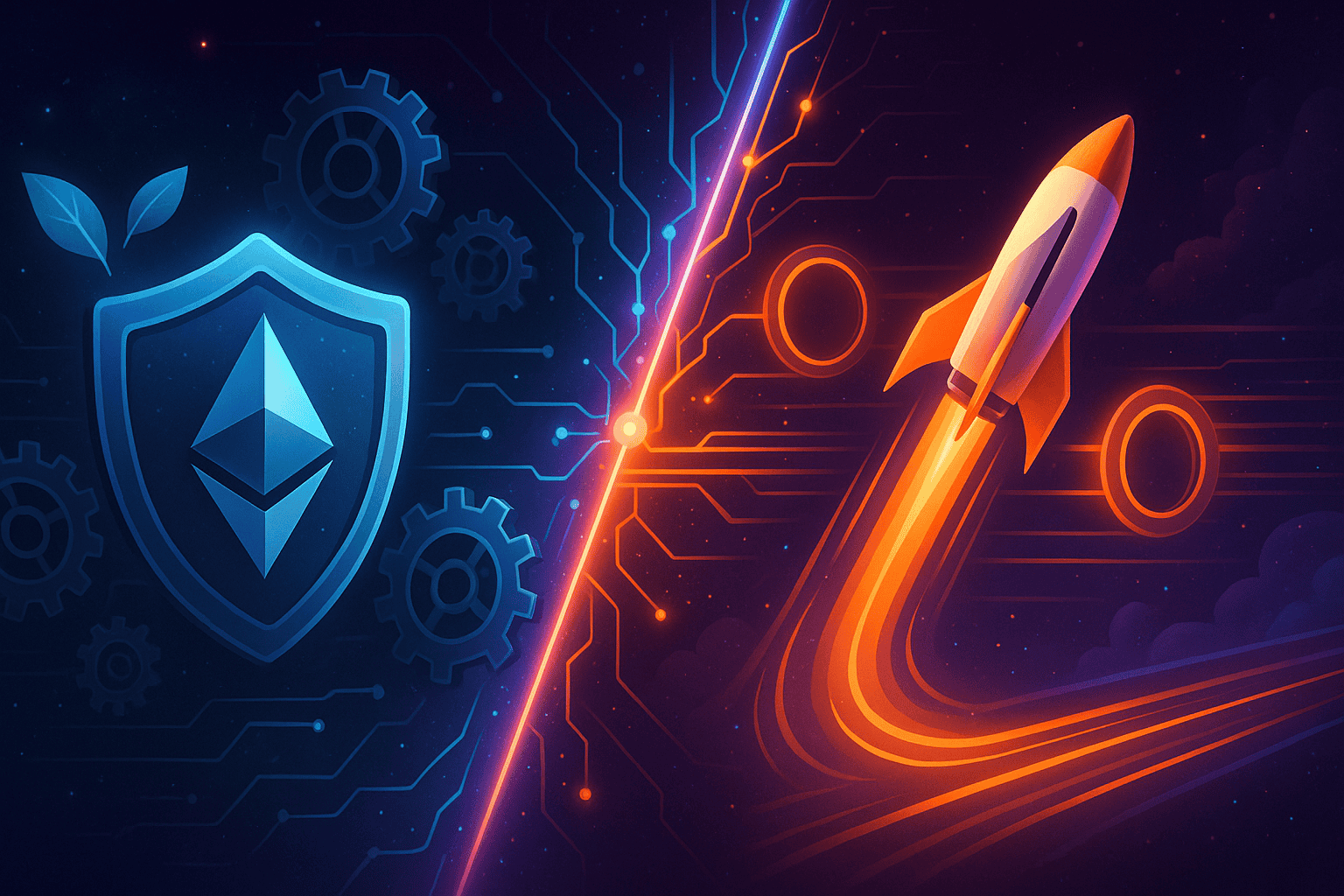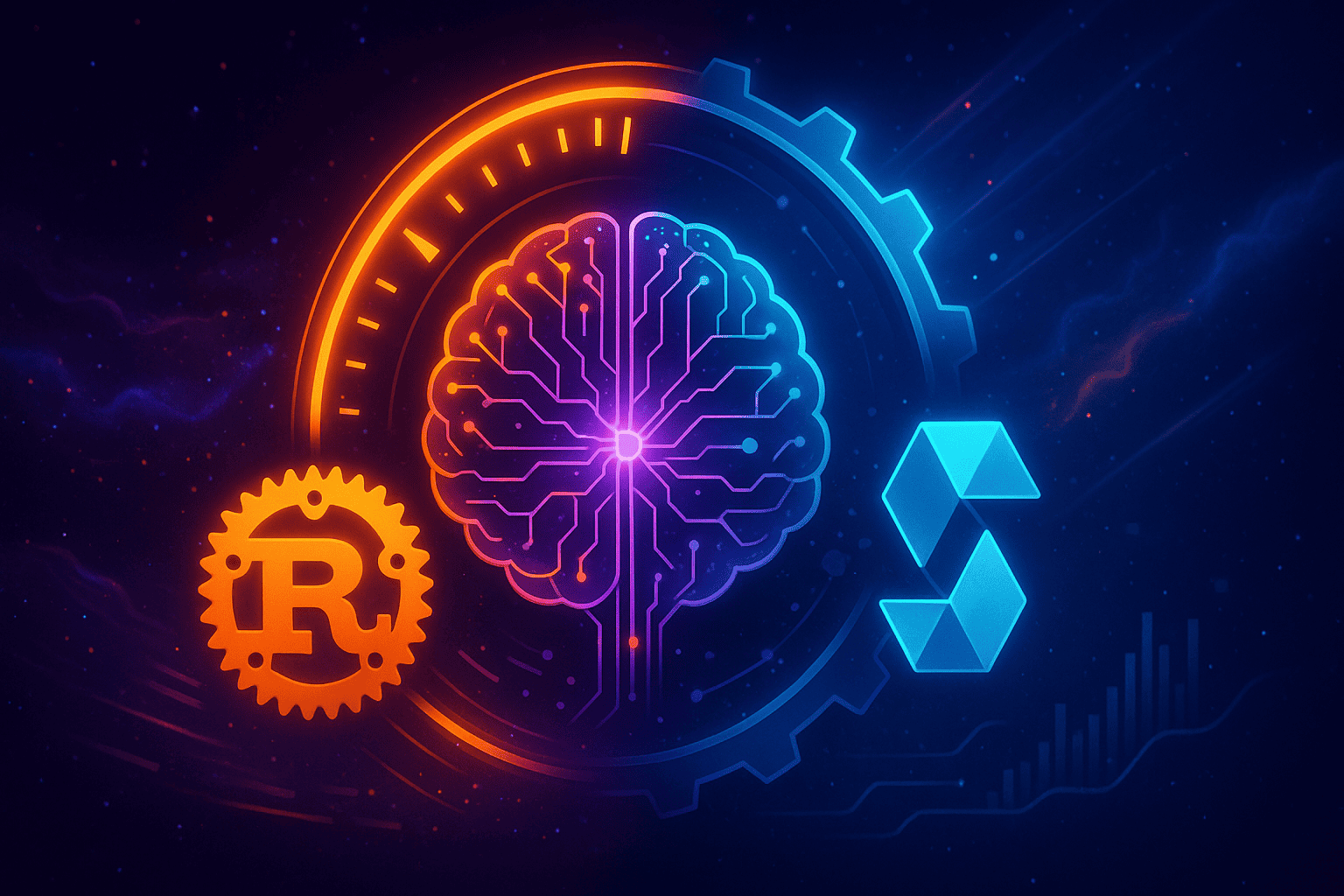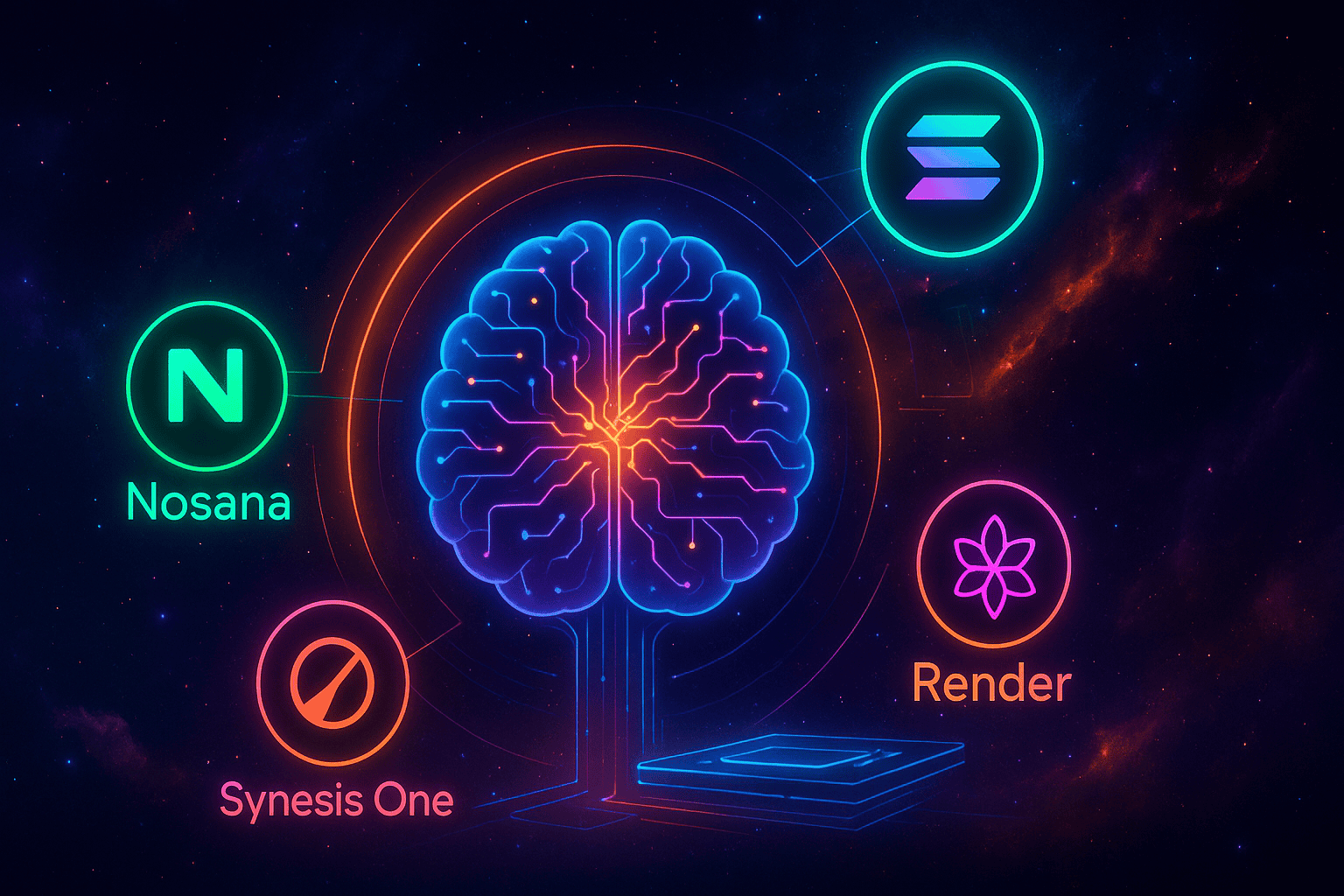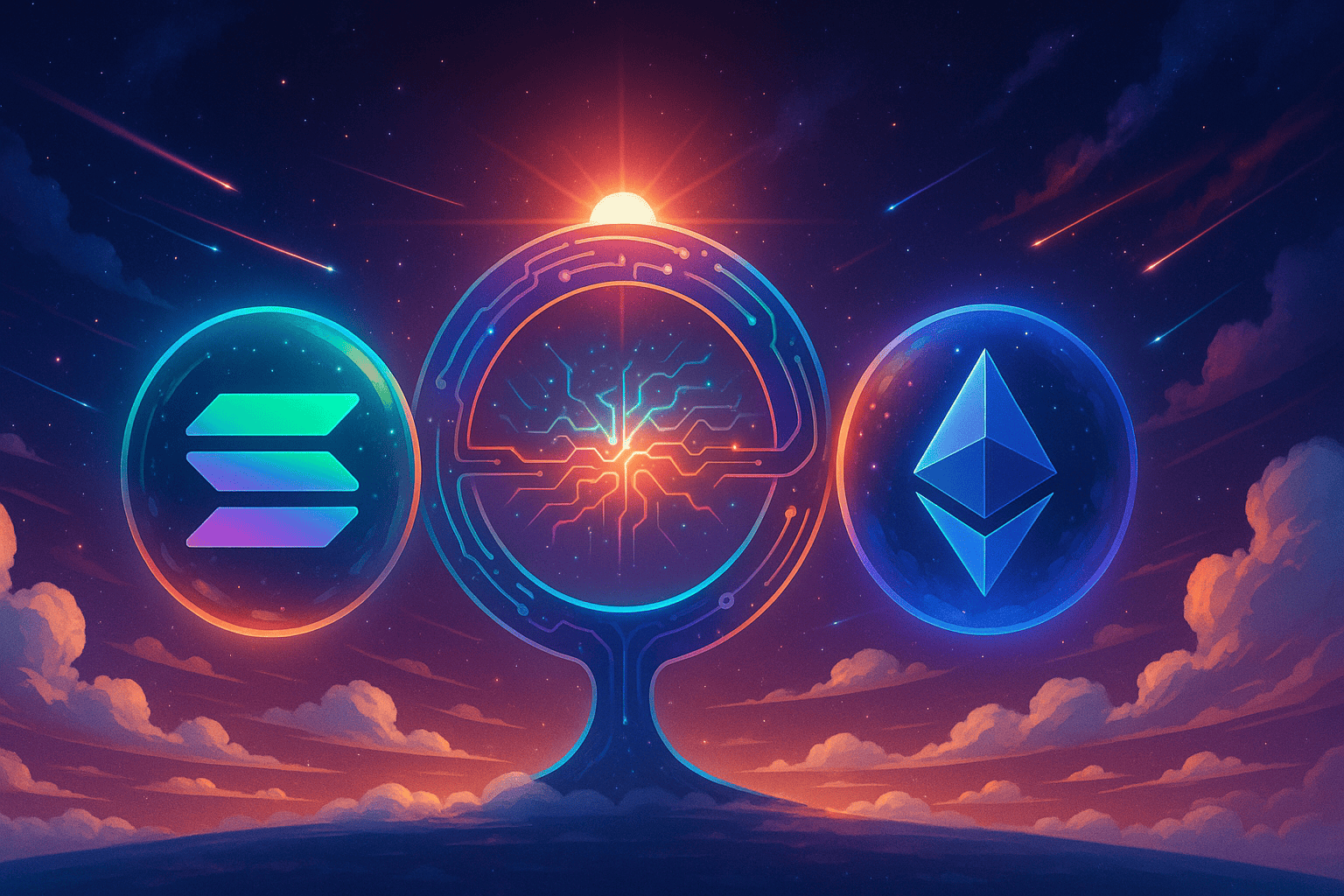Solana or ETH is and will be a hot topic for a long time.
Ethereum is still the heavyweight with a $314 billion market cap (May 2025), but Solana runs much faster. It handles around 65,000 transactions per second compared to Ethereum’s original limit of 7. And in the world of AI, speed really matters.
Solana or Ethereum – What makes them Different?

At the core, Solana is built for speed, while Ethereum is built for security and a larger ecosystem. They’re both good, no doubt. But they do things a little differently.
How They Handle Transactions
Solana works like a store with lots of open checkouts, many things happen at once. Ethereum, on the other hand, moves more carefully, handling one transaction at a time. That’s why Solana can process thousands of transactions in seconds, while Ethereum is slower but more established.
Their Approach to Security and Energy Use
Ethereum recently switched to a more eco-friendly system called Proof-of-Stake, cutting energy use by over 99%. Solana uses a different method focused on fast processing and keeping everything in sync. Both systems are secure, but Solana moves faster, while Ethereum focuses on stability and a proven track record.
How This Impacts AI Applications

AI applications often need to handle lots of data and make decisions quickly—think of live financial trading or fraud detection. In those cases, Solana’s speed is a clear advantage. Ethereum, however, has a larger developer community and more tools available, making it easier to build complex AI projects that don’t always require lightning speed.
Which Programming Language Works Better?
Solana mainly uses Rust, a language known for high performance and security. Ethereum uses Solidity, which is easier to learn and widely used by blockchain developers. If you’re building advanced, data-heavy AI systems, Solana’s performance makes sense. If you want easier development and access to a bigger network of apps and services, Ethereum is the safer bet.
Real-World AI Projects

Ethereum already supports big AI projects in finance, healthcare, and content creation. Solana is catching up fast, with over 400 new AI projects launched during a recent hackathon.
Notable Solana AI projects include:
- Nosana: A decentralized network for affordable AI computing power.
- Synesis One: A marketplace for AI training data.
- Render Network: A GPU rendering platform that moved from Ethereum to Solana for faster performance.
So, Which One Should You Choose?

It depends on what you need:
- Need speed and low costs? Solana is built for that.
- Need a mature ecosystem and trusted infrastructure? Ethereum wins there.
The truth is, they don’t have to compete. Many future AI systems will use both—Solana for fast processing and Ethereum for security and reliability.
AI and blockchain together are still a new combination, and both networks are evolving quickly. Whether you prioritize speed or stability, both platforms offer strong opportunities for the next generation of AI applications.
